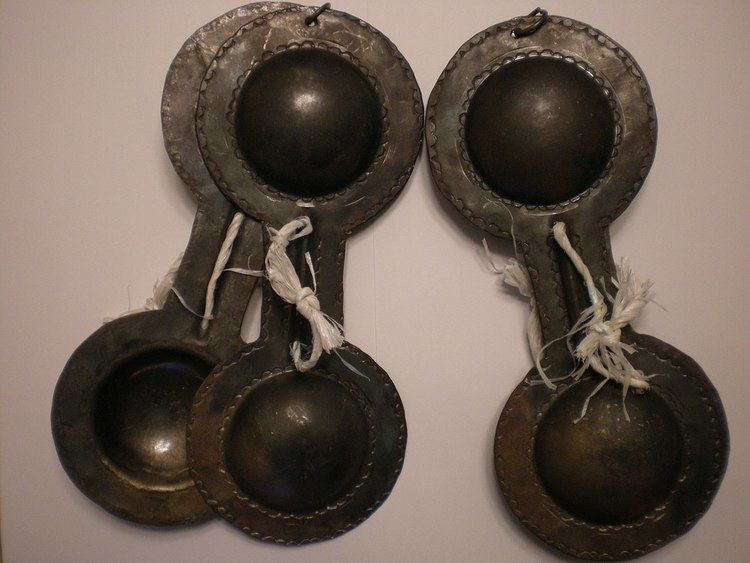Classification Idiophone | ||
 | ||
Other names Qraqeb, Qaragib, Garagab | ||
Krakebs (qraqeb), or garagab (Arabic: قراقب) are a large iron castanet-like musical instrument primarily used as the rhythmic aspect of Gnawa music. Gnawa today is part of the North African culture and is inherent in the Maghrebi soundscape.
Contents
Cultural Significance
Gnawa music is a spiritual music representing the history of Saharan West African people who are indigenous to in present-day Algeria, Morocco, Libya and Tunisia or Greater Maghreb. “...stories are told to those who are connected with their history by the very sound of the krakebs – they represent the sound of horses hooves hitting the ground as their people were carried away in grain sacks, and the rattling of shackles that used to hold their people captive.”.
Body
Krakebs are similar to large iron castanets in that they are handheld cymbal-type instruments which are handmade from iron or steel. They are Idiophones, meaning that their sound comes from the vibration of the instrument's body. The body is four cymbals (two on each side) attached by a string. Since they are played with one hand, the musician usually holds one in each to play simultaneously.
Playing
In the Gnawa style, krakebs stay closed between hits so that the instrument clanging shut is the most prominent sound. In Tunisia, they are hit and pulled back apart quickly so that the ringing of the instrument is the most prominent sound. Generally, there is one Sintir (Guimbri) and up to 20 krakeb players per Gnawa ensemble. Curtis Blues shows examples of these playings, as well as other cultural significances of this instrument in the following video:
